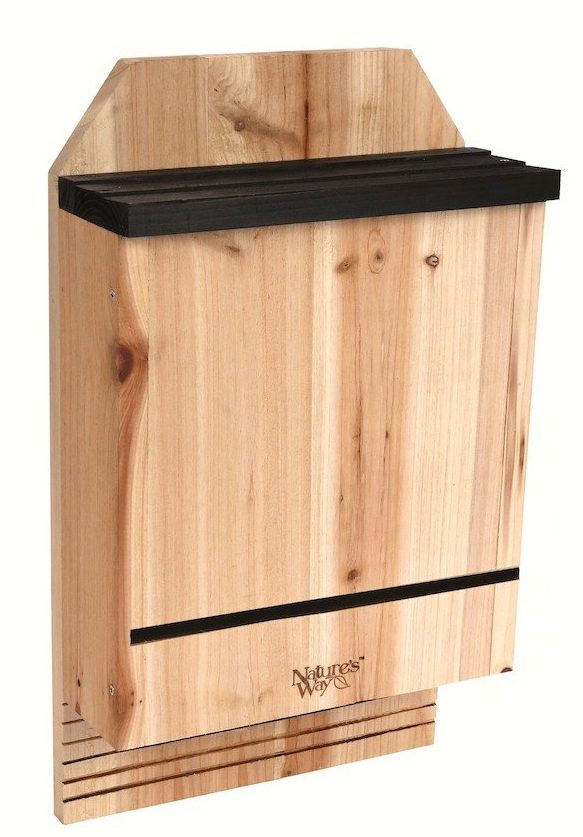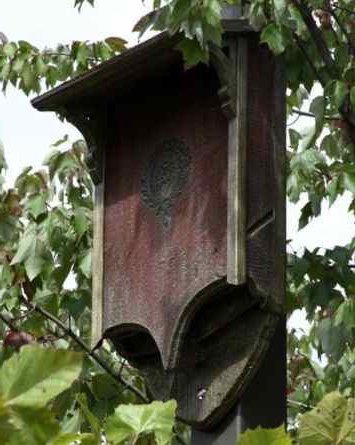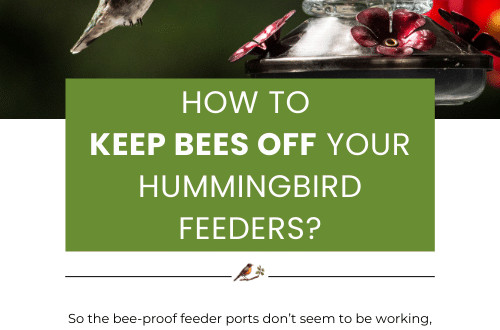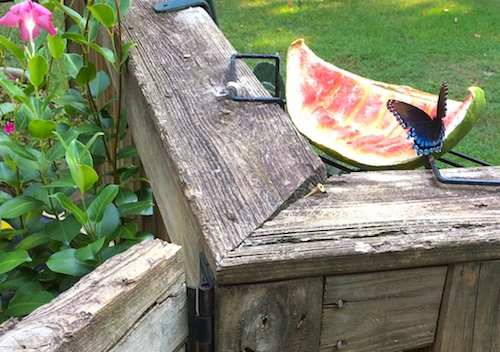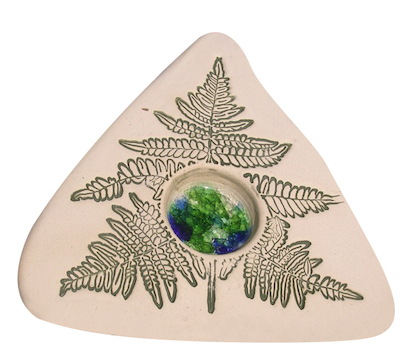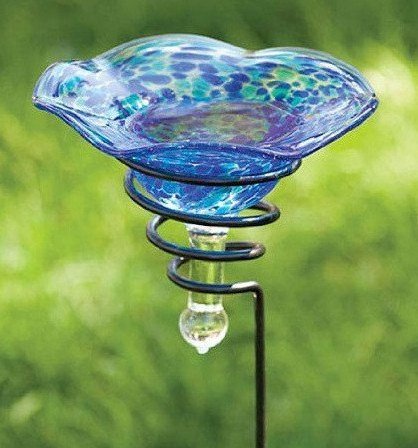-
Grandpa’s Pet Bat Didn’t use a Bat House
They’re creepy and they’re kooky, mysterious and spooky… remember the theme song? Maybe old enough like us to mix them up with the family residing at 1313 Mockingbird Lane.
It was Grandpa from the Munster’s who had the pet bat! Only showing him in flight, I don’t recall ever seeing his bat house, can you remember his name? Regardless, both of those theme songs keep replaying in the brain.
On a more serious note, it’s believed that about 44% of bees have perished this year from pesticide poisoning, which is really scary! Like the birds & bees, bats are also major pollinators of tropical plants and fruit, they’re considered the night shift pollinators.
Thankfully, more folks are tuning into the needs of these friendly flying mammals with fur. Offering bat houses for roosting actually helps promote pollination. Aside from the thousand of insects consumed nightly, pollination is a huge draw. Especially for the agave plant, because without it- there would be no tequila!
From bat house kits and large capacity bat houses to artisan crafted bat shelters, there’s now a great variety of ways to offer proper roosting spots.
Materials vary from recycled plastic and cedar to aged barn wood for a more rustic appeal. There’s even several plans available online to build your own.
It may prove difficult at first to attract them, residing near a pond or lake greatly increase chances of occupancy. Recommended height is 12 to 15 feet, with a clear pathway to entry.
Facing SE or SW allows the bat house to receive maximum sun exposure for retained heat. Structures of brick, stone or wood are ideal mounting surfaces as they also retain heat. Metal- not so much. A pole may be easiest as the shelter can be attached while still on the ground, and then erected with bat house already secured.
Either way, bat houses are definitely something worth looking into. With holiday approaching they’d make an excellent gift for the nature-lover on your list.
And Grandpa’s bat… Igor, of course!
-
Got the Crazies Around Your Hummingbird Feeders?
The frenzy around our hummingbird feeders is later than usual this year! Folks to the north are still reporting brisk activity this last week of September. Possibly due the hottest August on record (though they say that every year) this month has been fairly steamy as well.
So at this rate, in just a few short years, the East Coast should be seeing hummingbirds close to 9 months out of the year… right? Lucky are those who see the sprites year-round, we’re envious. The end of August used to see peak migration “crazies” at feeders. Birds are fiercer than ever, with juveniles now contending for nectar as well.
Do the birds a favor and hang an extra feeder, even a cheap plastic one serves them well during migration. Nectar can be mixed a little stronger too. Pure can sugar (nothing else-no substitutes please) at a ratio of 1:4, may be kicked up a notch at 1:3. That’s one cup of sugar to 3 cups of water… and only at migration since birds are seeking to fatten up. The extra calories add fuel for their long journey to Central and South America.
Keep the nectar really fresh! During sweltering heat in the mid-90’s, it really should be changed about every other day. Our 7 hummingbird feeders keep us busy… but their delight is so worth the work! Note the pink mandevilla vine, hibiscus and penta as they also provide nectar for the sprites.
If you’ve ever placed a sprinkler out to water grass or flowers… please consider running it for the birds sometimes. Moving water, especially fresh, cool water is an absolute oasis for all songbirds. We can’t even say enough about leaf misters for feathered friends!
If you’re sad because hummingbird season is drawing to a close for your locale… don’t fret. Like Arnold, they’ll be back! It’s called site fidelity, and if hummingbirds were happy at your place this year, they do remember and return next year. It’s actually a pretty amazing cycle for such a tiny yet special little bird.
Safe travels little ones… we’ll catch ya on the flip-side!
-
Fancy Butterfly Feeders not Required
Migratory winged ones are on the move!
It’s an awesome time of year to catch the action not only of feathered friends- but butterflies too!
Although we’ve nary seen a monarch this year (so very sad) a few other butterfly species have been prevalent. Several Swallowtails, Sulphurs and Viceroys to name a few. And even though we have a great selection on our website… they’re not coming to any fancy butterfly feeders.
A few alternative options to actual butterfly feeders:
•Discarded fruit- provided it’s not too far gone
•Nectar producing flowers- preferably native
•Leaf mistersThese things absolutely work to entice the flying jewels! Leaf misters offer a gentle spray which butterflies adore, you can see them dance and flit through the fine mist. In fact, it’s almost mesmerizing! Their own personal spa, leaf misters also have gardens growing lush. Use these year after year, ours are going on their 10th season!
Discarded fruit is a no-brainer; from oranges, to melons, pears, apples and bananas, place fruit on a deck rail, plate, or anywhere near flowers where you’ve seen the least bit of butterfly activity.
And the flowers? We prefer native perennials. Again, you’ll get year after year of blooms and activity. Lantana is is one of the more common plants in the southeast, in fact it’s almost invasive! Butterfly or milk weed is also a popular host plant. Pollination Trifecta in this video with hummingbird, bees and butterflies on one plant!
Plan next spring with a few vegetables specifically for butterfly host plants; dill, fennel and parsley are ideal plants to host black swallowtails, and milkweed is a must for monarch caterpillars!
Another easy DIY is creating a waterless pond for butterflies to warm in the sun. Simply place heat-aborbing rocks (so they’re flat) in a sunny spot, add sand and salt and keep moist. You may wish to line the area first with plastic to keep salt out of soil. Sort of a crude version of the popular butterfly puddlers.
And one last tip on feeding butterflies: They do not drink from an open water source. When using butterfly feeders like this staked one below, place a sponge in the center to soak up nectar. This acts as a wick where butterflies draw nectar like they do in nature from flowers.
Ok, maybe we’re wrong, the really really last tip: Stop using chemicals like pesticides, fertilizers and herbicides. Natural is the new landscape, manicured, pristine lawns and gardens are a thing of the past. Do it for butterflies, do it for all pollinators, most of all… do it for the human race!

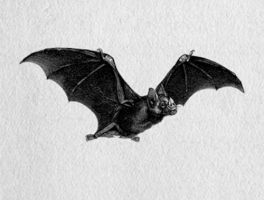 They’re creepy and they’re kooky, mysterious and spooky… remember the theme song? Maybe old enough like us to mix them up with the family residing at 1313 Mockingbird Lane.
They’re creepy and they’re kooky, mysterious and spooky… remember the theme song? Maybe old enough like us to mix them up with the family residing at 1313 Mockingbird Lane.